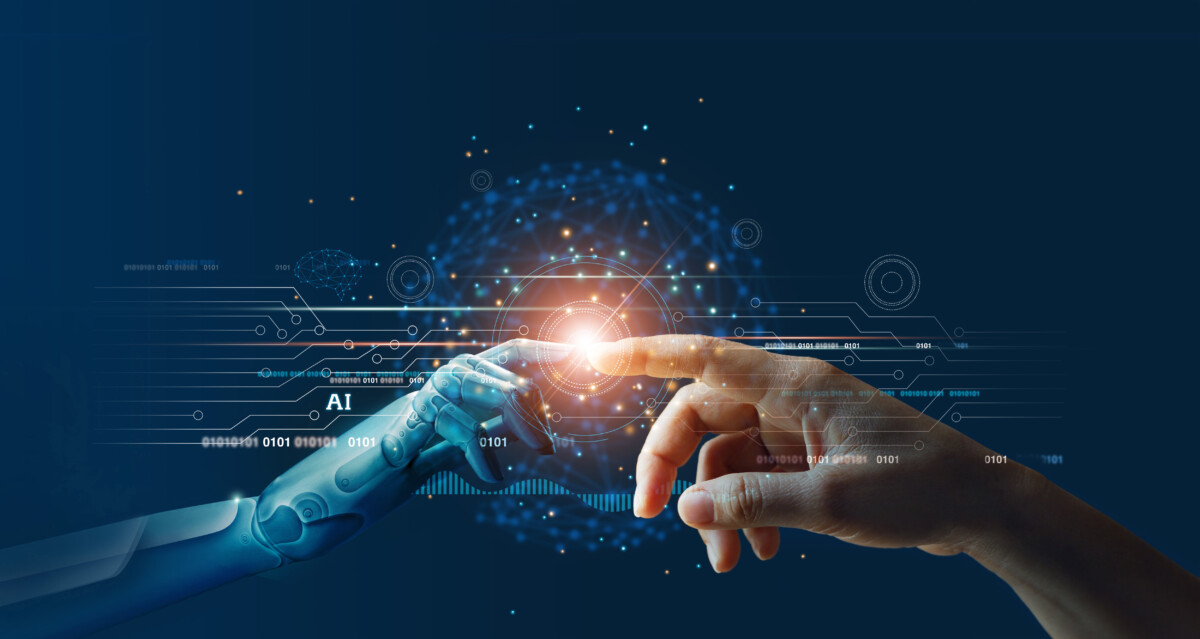How Artificial Intelligence can Improve Manufacturing Data, and the Implications for Industry 4.0

By Alix Rübsaam
Are robots coming for human jobs? Not exactly…

As an AI expert, I’ve advised various people involved in smart factory operations, specifically on how to optimize processes. This realm is where we see most AI implementations, from supply chain to distribution. AI is the heart of Industry 4.0, increasing productivity and yield, reducing losses, and identifying inefficiencies.
Generally, AI implementations in Industry 4.0 are used to predict and reduce unexpected downtime (up to 90%), as well as increase optimization and efficiency. Contrary to what some may believe, the implementation of robotics and AI doesn’t simply replace human jobs, but rather alleviates the difficult aspects of it – such as reducing strenuous physical labor, reducing burnout and ensuing human error and injury, and reducing downtime. In fact, these implementations – which comprise 3 million industrial robots operating in factories worldwide – make manufacturing jobs safer for humans. They also open more senior positions in programming, design, and maintenance.
That isn’t to say that the implementation of AI and robotics doesn’t come with its own set of challenges. Although AI can reduce costs over time, the initial implementation can be quite costly as it requires an immense amount of data, which often needs to be purchased if not self-obtained. It also requires skilled experts to set up and maintain, and it is open to vulnerabilities.
One of the biggest concerns, which many have already faced head-on, is algorithmic bias. By definition, algorithmic bias describes an algorithm’s systematic and repeatable errors resulting in unintended unfair outcomes that privilege one category over another. At its core, AI bias is an accuracy and efficiency problem driven by human biases, which are usually unconscious or unintended. Realistically, there is no bias-free algorithm given the fact that algorithms are trained to achieve a trained outcome. For example, an algorithm trained to search for circles will always be biased against squares and triangles.
AI can have serious ethical implications in certain industries where humans are being judged, like we’ve seen in recruiting. However, in Industry 4.0, we typically see this revealed through cultural differences. For example, a self-driving vehicle manufactured in bike-heavy Amsterdam would have significant issues driving safely in vehicle-heavy, multi-lane New York City because of the human biases associated with the people building these data sets. Could you imagine the navigation failure?
The good news is that it is definitely possible to avoid unintended AI bias in smart manufacturing. The best way to train against AI bias is to keep a human in the loop to consider the “how” and “why” of the AI application. To identify these biases, it is important to have this human change a variable and evaluate the output to identify if there is, perhaps, an unintended bias within the dataset. For example, temperature may be an important variable in a smart factory. In order to test for a potential bias in this data, a human could change the temperature variable to identify changes to the algorithm.
In my opinion, the real opportunity for Industry 4.0 lies in the industry’s ability to produce its own data, as opposed to buying it, due to the level of technology within it. As a collective, we’ve heavily underestimated the importance of how data is collected. AI requires a vast amount of data, whereas smart factories can generate this data on-site utilizing sensors and other technologies, resulting in data that is less likely to have unknown biases.
Industry 4.0 has the advantage of being a leader within the AI space as it can self-produce more accurate data, resulting in increased profits and productivity, less intensive labor, and additional job opportunities. As this technology continues to grow exponentially, the coming years will be pivotal in revealing the power, and consequences, of effectively using AI-powered robots in Industry 4.0.
Alix Rübsaam is a Singularity Group Expert in Artificial Intelligence and Philosophy of Technology, where she investigates the societal and cultural impact of exponential technologies.












